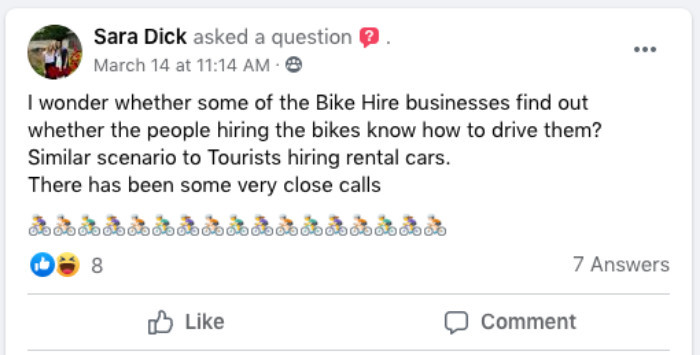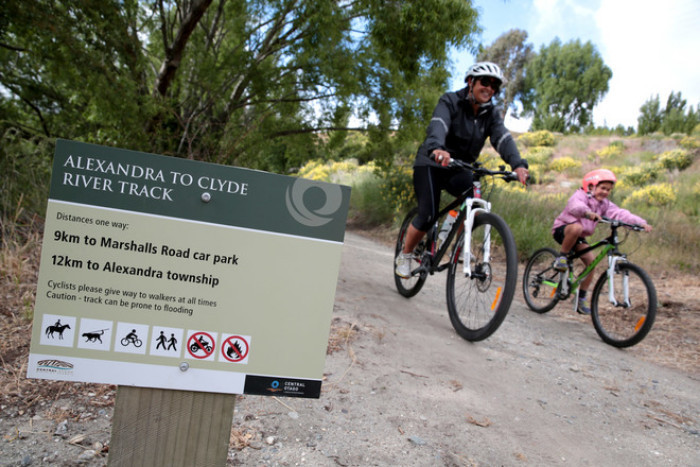Opinion: Cyclists on paths and trails need to be courteous
Rowan Schindler - opinion
20 March 2021, 4:00 PM
 Rowan Schindler takes a look at the rules around who gives way when a cyclist and a pedestrian meet on a shared path. Photo: Pixabay.
Rowan Schindler takes a look at the rules around who gives way when a cyclist and a pedestrian meet on a shared path. Photo: Pixabay. A number of people have posted on social media in the region recently, complaining of close-calls with cyclists on shared paths and trails in the region.
It is a complicated matter and an age-old debate since the bicycle began peddling its way alongside pedestrians.
Myself, I am a cyclist, but I am also a tramper and trail runner.
I have lost count the amount of times I have had to jump off a trail because of a speeding cyclist barreling down from behind or in front of me.
I asked the Central Otago District Council (CODC) for some clarity.
CODC Roading Manager James McCallum says “the easiest way to answer all of these queries regarding the rules is to check out this link (NZTA)".
He says "Council have no means of enforcement when it comes to cyclists, it would be a matter for the Police".
"The Rail Trail is administered by Department of Conservation.”
Using the NZTA website, it actually states that the cyclist should be giving way to pedestrians, as the pedestrian is the more vulnerable user on the path.
As the controller of the more “dangerous” vehicle, the onus is on the cyclist to control themself and give way to the pedestrian.

A number of social media posts complained of cyclists on shared footpaths, which drew debate. Image courtesy Facebook.
Waka Kotahi NZ Transport Agency (NZTA) media manager Frances Adank, who is a lifelong cyclist, says she understands the frustration some people have but reinforces that rule.
The NZ Transport Agency is the New Zealand entity tasked with promoting safe and functional transport, including cycling.
She said pedestrians on a shared pathway always get right of way and the cyclist should not expect pedestrians to move.
Instead, the cyclist is the one who must make accommodations for any pedestrians.
Ideally, both should be courteous of one another and share the space.
“We can have all the rules in the world but in many circumstances, people need to take extra care and build in some forgiveness,” she says.
“Many cyclists on a daily commuting basis have to ride as if a vehicle is about to exit a driveway and the driver does not see them, or not give way to them at an intersection where they should do, to stay safe.”
Frances gives a very important example of who gives way to who.
She says with the introduction of e-bikes, more people are using the roads and paths than ever before and some may not be up-to-date on the rules and regulations involved.
“The general rule is that electric (such as e-bikes) gives way to manual (no matter the source eg. e-scooter versus push scooter), cyclists/ pedal power or scooters give way to pedestrians and when sharing the highway, cyclists have to obey the road code like all drivers.”

Pedestrians get right of way on shared pathways, but everyone should be courteous and look out for one another and be kind. Photo: Tourism Central Otago.
To put simply, pedestrians get right of way against anything other than themselves, as they are the most vulnerable user.
When it comes to roads, cyclists are considered vehicles, so motorists have to give them equal measure, especially when encountering them on one-way bridges.
A number of instances have been discussed about rail trail users crossing roads, sometimes without looking out for traffic.
“I think people acknowledge that when going off an off-road path/shared path it may take cyclists a minute to remind themselves of their open road environment so all drivers just need to take care if they can see a trail exiting at a particular point to go across the highway or join it,” Frances says.
“The onus is on the cyclist to obey the road rules and often there will be warning signs reminding them of an intersection ahead or that they are rejoining a highway/ local road.
“But drivers can also keep their eyes open if they are in an area which has shared paths or cycle trails – cyclists are much more vulnerable than a person is inside a vehicle so drivers need to remind themselves of that also.
“We want people to be safe and enjoy shared paths and that means building in care on all sides – be prepared for people to not always do what you think they will do.
“Experienced riders need to be aware not everyone will be a competent, confident cyclist when they start out.
“If people can be courteous and yell out a warning or ring their bell if they are passing without frightening the person ahead, great.
“If people can avoid wearing earbuds if they need to be in touch with their surroundings is another thing to bear in mind.”
I completely understand cyclists are a necessity as our region relies on cycling for its tourism.
As I said, I am a cyclist myself, and a few bad apples seem to spoil the batch when it comes to cycling PR.
But please, if you are riding on a shared path, give way to pedestrians, kindly ding your bell and please thank them if they give way to you - because they don’t have to.
A shared path is not an exclusive mountain bike route and there’s no reason for you to be flying around blind corners like it’s a race.
We are all users of these trails and if good will and courteous behaviour becomes the norm, we will be able to enjoy our space together.


